Hydroponics is a faster and unconventional soil-less technique that can be used indoors and outdoors to cultivate plants.
Hydroponic gardening is a very effective form of indoor gardening because it uses water instead of soil. This makes it easy to control the environment and nutrients, as well as save space.
But before you get started, here are the top hydroponics tips for success in hydroponic gardening.
- Related article: What is Hydroponics Gardening?
1. Decide Which Plants You Want To Grow
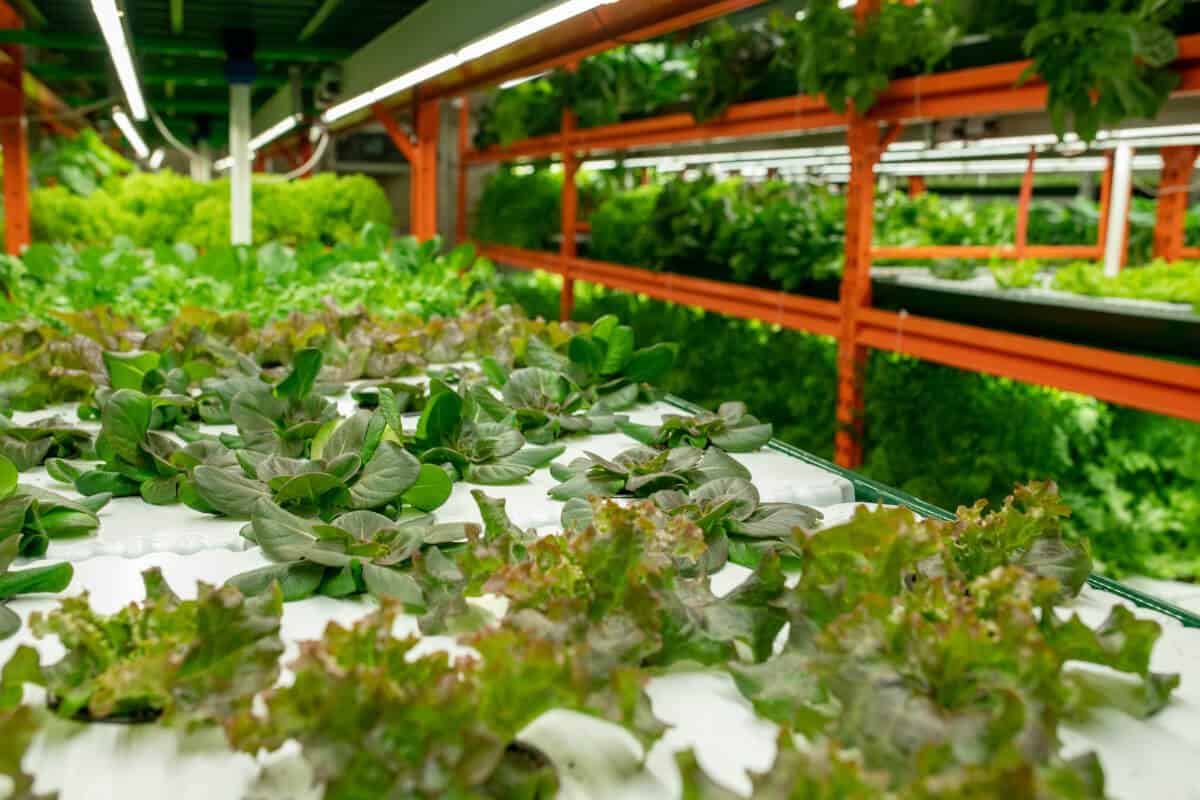
Starting your own hydroponics farm will require a certain amount of research and in-depth knowledge of the specific plant that you would like to cultivate.
Certain kinds of plants grow well together and can be grown in the same climate. Every plant has its own preference and can be successfully grown provided these needs are met.
Do your research on the plants that you intend to harvest. Find out the recommended pH level for your water, the daily amount of lighting they need, whether they grow better in drier conditions or if they prefer humidity, and what diseases these plants are susceptible to contracting.
Acquiring an understanding of the needs of the specific plant, before planting them, will allow you to alter your equipment to their needs and set your hydroponics up for a successful harvest.
Learn more about the Best Plants for Hydroponic Gardens.
2. Water Quality Is Essential
The water you use in your hydroponic system will act as the base for your plant’s nutrients and growth. Opening the tap and using the water provided by your local state will not make the cut.
The water source that flows out from your tap contains added minerals such as calcium, magnesium, and potassium. Other harmful chemicals such as chlorine are added to your tap water to give it water clarity.
Always have the water supply tested that you intend to use in your hydroponics system. Water toxicity and poor water quality will lead to major deficiencies in your hydroponics system.
To achieve successful hydroponic plant growth, you will need to use the purest form of water that is available. Rainwater is a great, clean option to use in hydroponics.
Understanding what’s inside your water supply will benefit the growth of your plants, and you will notice a difference within a few days.
3. Balance Your pH Levels
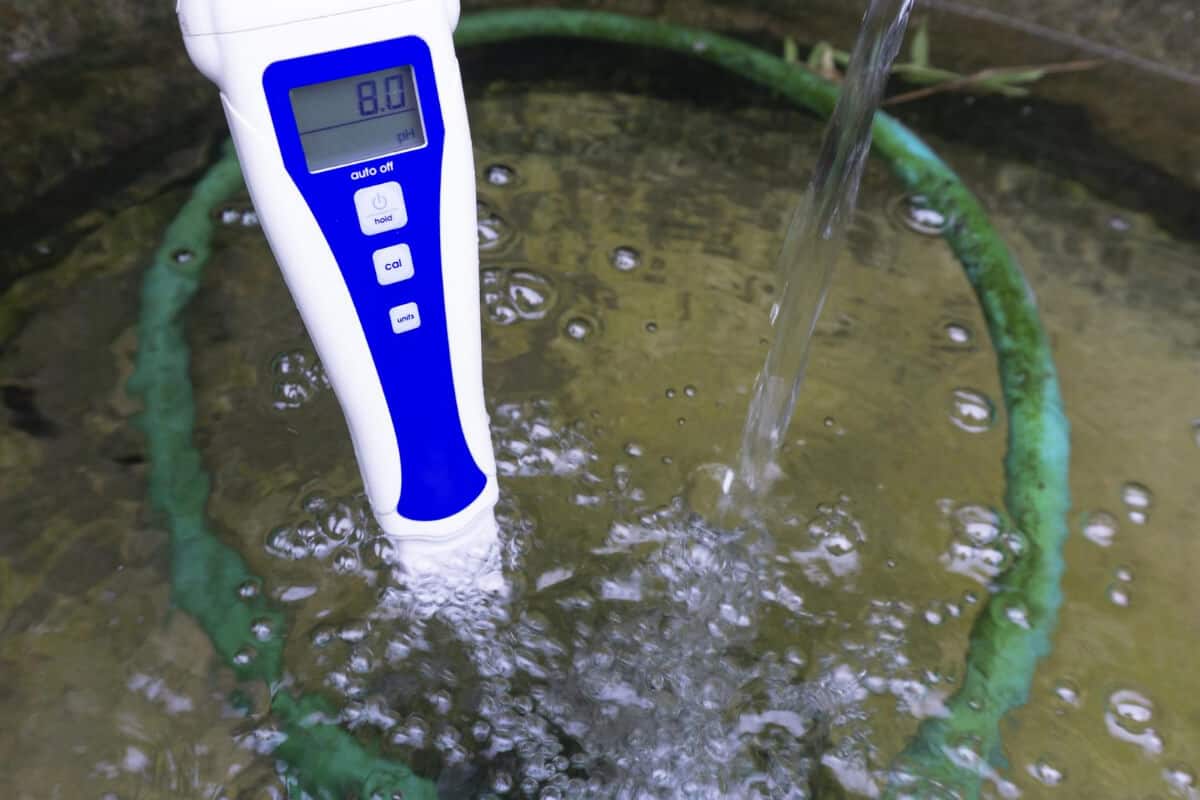
The secret to a successful hydroponic system is achieved by understanding the potential hydrogen (pH) levels in your water and how to alter them accordingly.
The pH levels in hydroponic water are measured by the acidity levels or alkalinity of your water. Hydroponics and successfully growing plants go hand in hand with the right pH balance to match the plant’s needs.
The acidity or alkali levels in your water must be tested with a pH tester. A pH tester uses a scale from a scale of 0 to 14 to determine the acidity or alkalinity in your water.
0 on the tester is the most acidic, 7 is neutral and 14 is the most alkaline.
If your pH levels are too high or too low for your plants, they will not be able to absorb the nutrients in the water.
Before adding a hydroponics nutrient solution to your water check the pH balance. Remember that adding nutrients to your water will always alter the pH levels.
The checking and adjusting of the pH levels in your hydroponic system should be done regularly. This must be done by slowly adding a pH upper if your water is too acidic or using a pH downer if the water is alkaline.
4. Use Grow Mediums Optimized for Hydroponics
At the beginning of your hydroponic growth, you will need to make use of a growing medium that will provide support for your seedlings.
Your seedlings will use a growing medium to develop their root system and absorb nutrients.
The advantage of using a growing medium is that all the excess water and nutrients will drip from the growing medium back into your water tank. The growing media also keeps your seedlings damp and create the perfect environment for them to sprout.
Rockwool is an excellent growing medium that will provide the support your seedlings need to develop a strong rooting system.
Some cheaper alternatives that you can use as a growing medium are coco choir and fish gravel.
5. Create A Perfect Environment
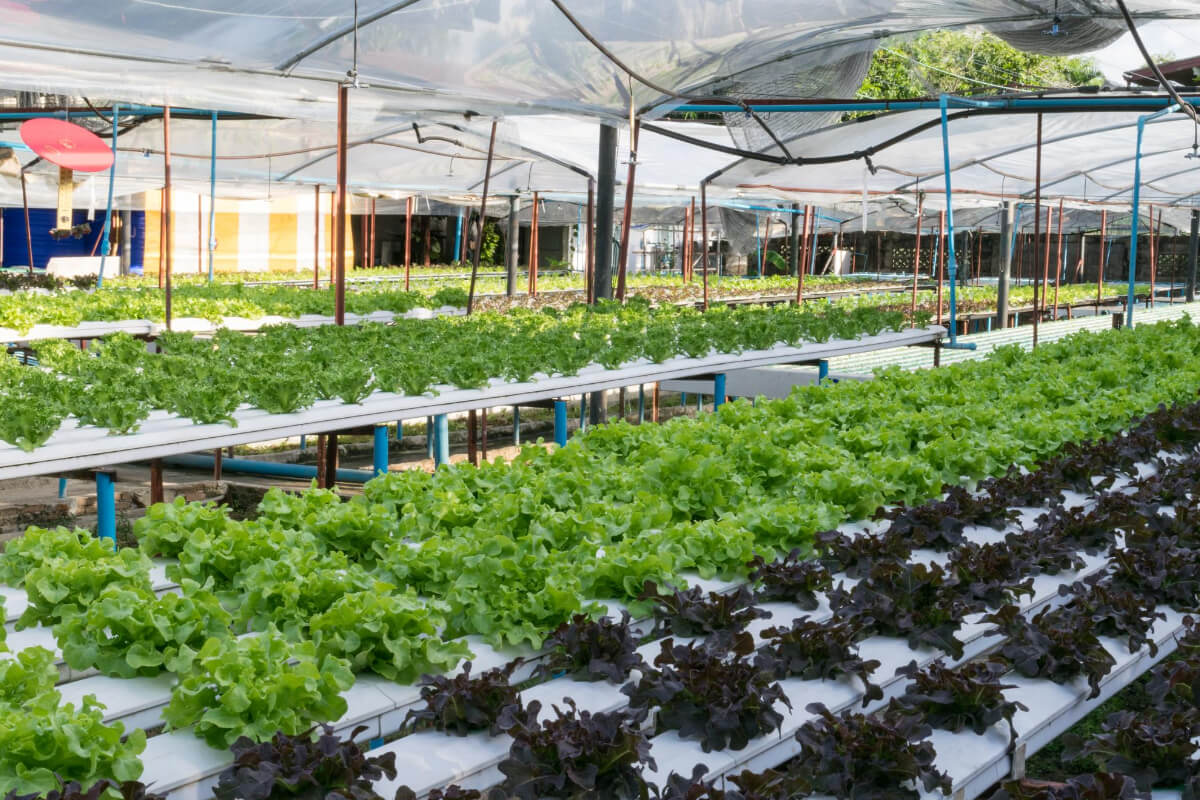
The beauty of hydroponics is that it allows you to grow your preferred crops throughout the year, as long as you create a healthy environment that will help support happy plant growth.
All plants are customized to their own unique climates, and these need to be replicated.
Indoor hydroponic-grown plants will require substantial lighting, heating, ventilation, and measures taken to reduce the humidity.
Younger plants will require a significant supply of sunlight or artificial light and a higher atmosphere temperature. Whereas plants that are flowering and about to produce fruit will require less light.
Outdoor hydroponic growers must create a suitable environment that provides sufficient shelter for external factors such as heat, frost, wind, and excessive rain.
- Related article: Seeds for Hydroponics
6. Acquire The Basic Equipment for Successful Hydroponics
Hydroponics systems can be rather large and require a vast array of equipment. The growing conditions for your plants need to be optimized.
The basic equipment you will need to grow successfully is dependent on the hydroponic method you decide to build and whether you set your system indoors or outside.
The equipment essentials you will always need are a strong enough air pump, a timer, a water reservoir, grow lights (if you decide to plant indoors), fans, a dehumidifier, containers for your plants, nutrients, or fertilizer, grow mediums, and a pH tester.
Additional equipment can always be added throughout your growing season. Acquire all the basic equipment first for successful hydroponic growing and harvesting.
- Related: Best Grow Light for Hydroponics
7. Know Which Hydroponic Method to Use
Deciding which hydroponic system to use will set you up for a successful harvest.
6 main hydroponics methods have proven to be successful for growers.
- Wicking System
- Deep Water Culture (DWC Hydroponic Guide)
- Nutrient Film Technique (NFT Hydroponic Guide)
- Ebb and Flow
- Aeroponics
- Drip system
Each system will cater to different plants, and some will demand a higher skillset and knowledge in hydroponics.
The easiest system to start your journey to becoming a successful hydroponics harvester is the Wicking System.
8. Use Recommended Hydroponic Nutrients
Hydroponic plants start as seedlings and are sensitive to the amount and types of nutrients they require throughout the different stages of their growth. Seedlings that are grown in soil will always require more nitrogen than plants that are in full bloom.
Nitrogen, Potassium, and Phosphorus are the main hydroponic nutrients that plants require to grow, these are classified as macronutrients. Your plant’s diet also needs smaller amounts of micronutrients such as boron, manganese, zinc, iron, calcium, and copper.
These nutrients are absorbed by your plants through their roots that are submerged in your hydroponics reservoir water or through passing nutrient-rich water that is pumped by your system.
Adding the correct amount of nutrients to your mixture of water is of utmost importance. Deciding on which nutrients to use for your hydroponics system, always look at the online reviews of the products.
Pay particular attention to what types of nutrients are contained within the product you wish to use. Manufacturers will always provide a guide for the recommended dosage. Always stick to the manufacturer’s recommended dosage on the bottle.
9. Prevent Mildew and Fungi
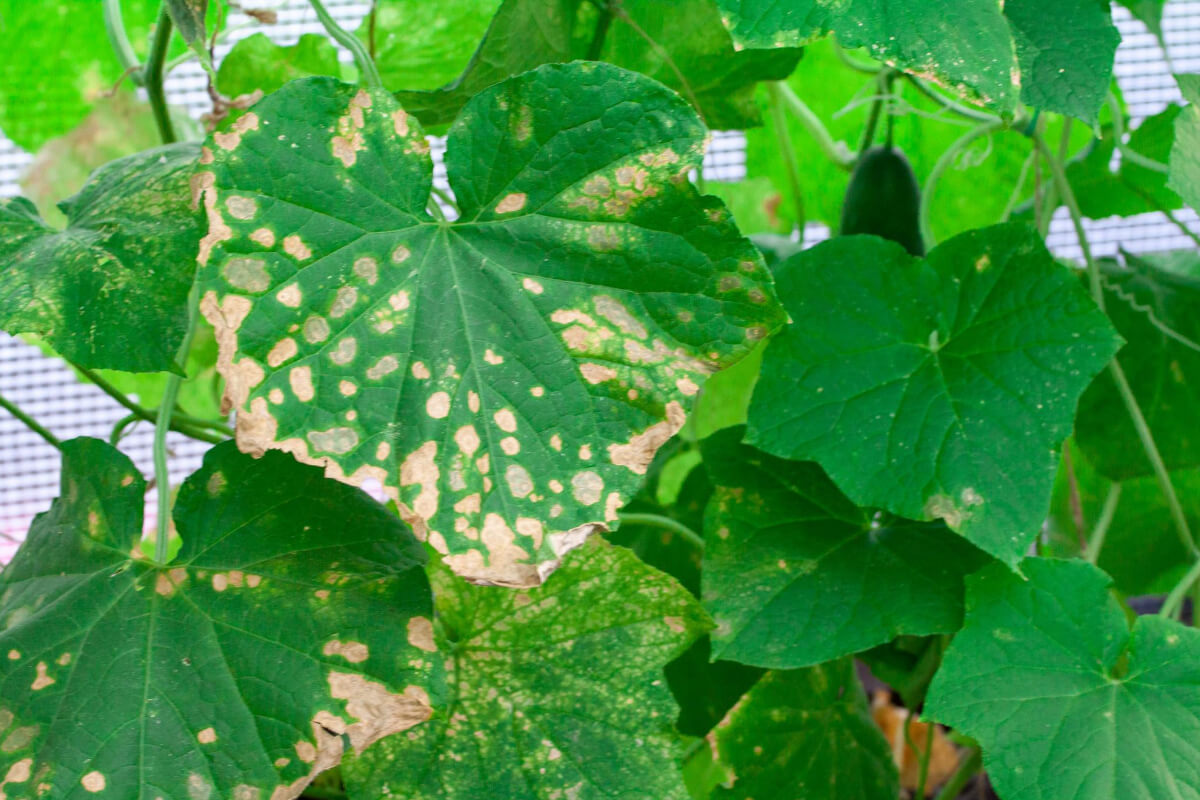
A serious threat to plants that often occurs with indoor hydroponics is mildew and fungi. Fungi are plant killers and thrive in warm, moist conditions that are generated through hydroponics.
To prevent fungus or slime from destroying your plants, it is imperative to have a steady flow of air that blows over your plants. The air will dry out the unnecessary moisture and prevent fungal spores from germinating.
The problem with fungi is that it spreads like a wildfire. If you notice any of your plants that have been infected with fungi, it’s best to remove them from your hydroponic system immediately and isolate them away from your other plants.
To prevent any mildew or fungi from forming on your plants, use a dehumidifier and keep the humidity level between 45-50% in your grow room. This will discourage any fungi from growing and ensure you have a successful harvest.
10. Hydroponics Pest Control
Your lush green plants will attract unwanted pests that can ruin all your efforts within a few days.
Do daily inspections of your plants and observe under their leaves and pay particular attention to any white marks that may occur under your leaves.
Organic pesticides such as insecticidal soap and pyrethrum can be used to prevent and kill any unwanted pests that will occur on your plants. These two organic pesticides will kill most pests like Spider Mites, Aphids, and White Flies.
11. Set up a Daily Routine of Care
Setting up a daily routine and task list will give your plants the daily attention they require. Record your daily activities and write down any progress signs or weaknesses your plants are showing.
Your schedule should include a daily inspection of the water levels in your reservoir, any signs of pests or unwanted fungi, pruning your plants, and testing your water pH levels.
Set up a weekly feeding plan for your plants with the amounts recorded so that if you aren’t available to feed your plants, someone else can easily step in and take over.
12. Prevent Algae in Hydroponic Systems
Algae and hydroponics tend to go hand in hand. The warmer temperatures, water, light, and nutrients that your hydroponic system provides for your plants will always encourage the growth of algae in your system.
Algae growth in your system will negatively affect the optimization of your hydroponics system. Some side effects of algae are diminished amounts of nutrients, oxygen levels, and unbalanced pH levels in your water.
Preventing algae can be achieved by keeping your water reservoir away from any direct sunlight and by regularly cleaning the inside of your water reservoir. Reservoir cleaning should be done every 2 – 3 weeks.
Using dark piping for your hydroponics system will also discourage algae growth.
If you have a serious algae breakout during your planting season, it’s best to empty all the water out of your hydroponics system. Thoroughly clean the reservoir and components and then refill the water with nutrients for your system.
After you have harvested a crop, make sure to clean your equipment thoroughly to prevent the build-up of unnecessary algae.
13. Choose the Right Grow Containers
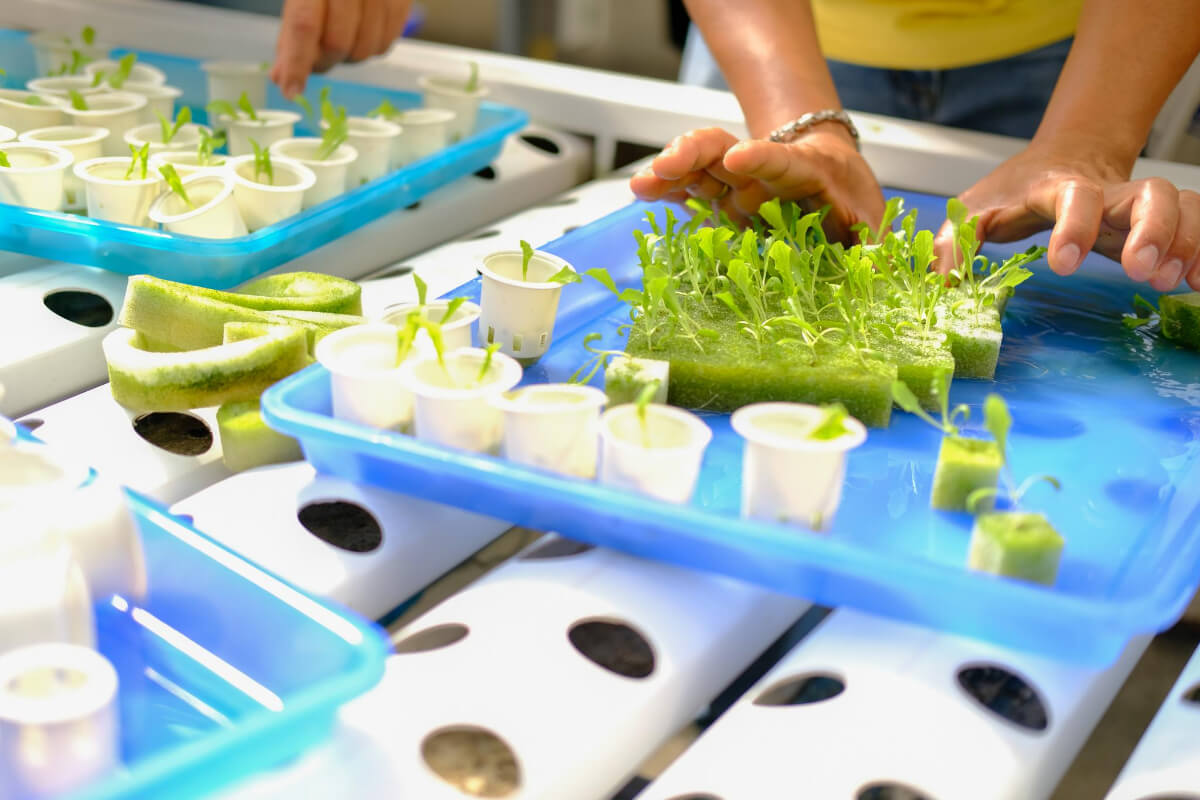
Choosing the correct type and size container for your hydroponics system will increase the growth rate and success of your crop.
Use smaller containers at the start of plant growth and migrate your plants to bigger containers as they grow.
If your plants are too big for a container, this will have a negative effect and stunt their growth. If the container is too large for your plants, there is a higher possibility that you will overwater your plants and their growth will be restricted.
14. Use an EC Meter
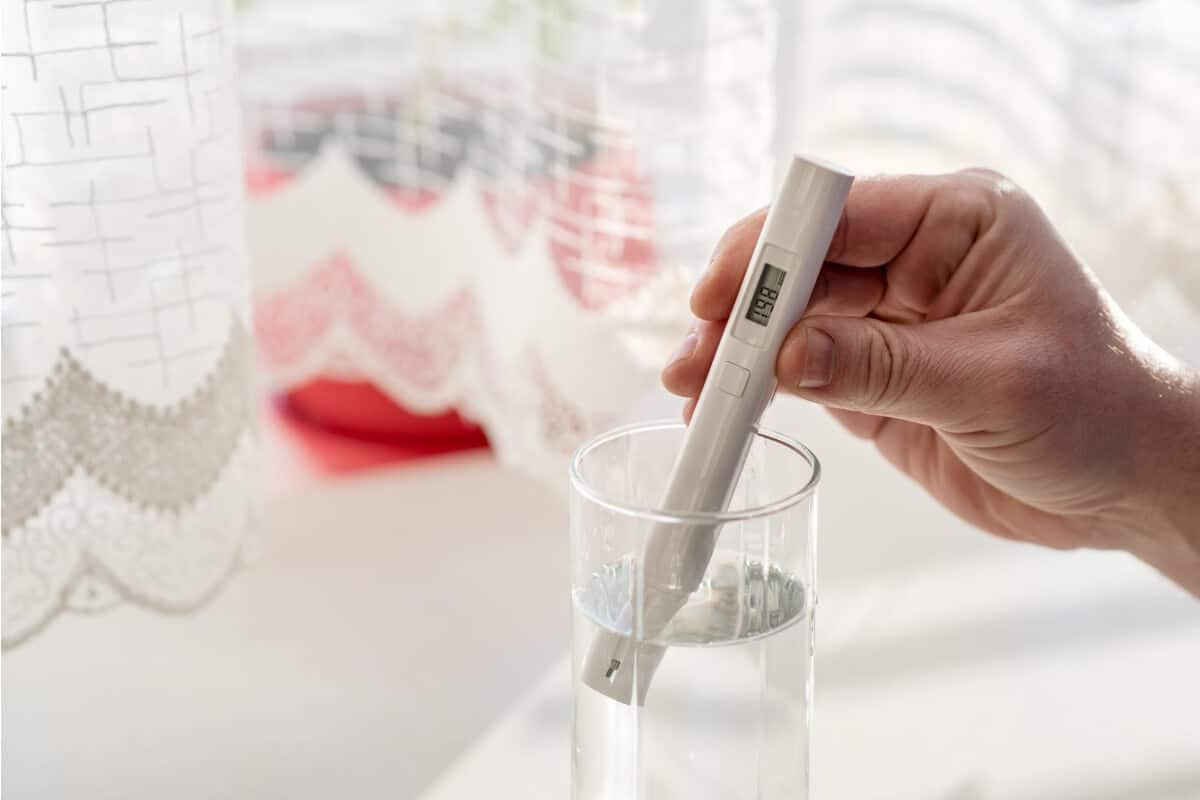
The soil-less technique of hydroponics can be unforgiving, and you need to have the utmost accuracy when giving your plants the nutrients they need. If you overfeed your plants, they will begin to show signs of burning on their leaves.
On the opposite end of the scale, underfeeding your plants will result in them starving, being susceptible to disease, and preventing their growth.
To ensure that you are accurately feeding your plants the recommended nutrient in your water, use an EC Meter when you are mixing nutrients to match a feeding chart.
15. Begin Small
Take your time as a first-time grower and experiment with different hydroponic methods that best suit your needs and the type of plant.
Begin with a few plants on a small hydroponic system until you can master the technique. Once you have the experience and are confident to start producing a larger harvest, upgrade your hydroponics to a larger system that will be within your capability.
Hydroponics Growing Tips Final Thoughts
Hydroponics is one of the most rewarding growing techniques available today. It allows you to grow plants without having to worry about soil or dirt.
The key to success is finding the right balance between light, water, nutrients, and air. There are types of equipment and methods that can help you to grow your hydroponics.
It is up to you which one you prefer to use for your hydroponic gardening, though sometimes the methods vary depending on your hydroponic plant.
With proper care and attention, you can achieve great results using hydroponics. With these 15 tips, you will be able to grow your own crops using hydroponics successfully.
Learn more about hydroponics with these other articles:



